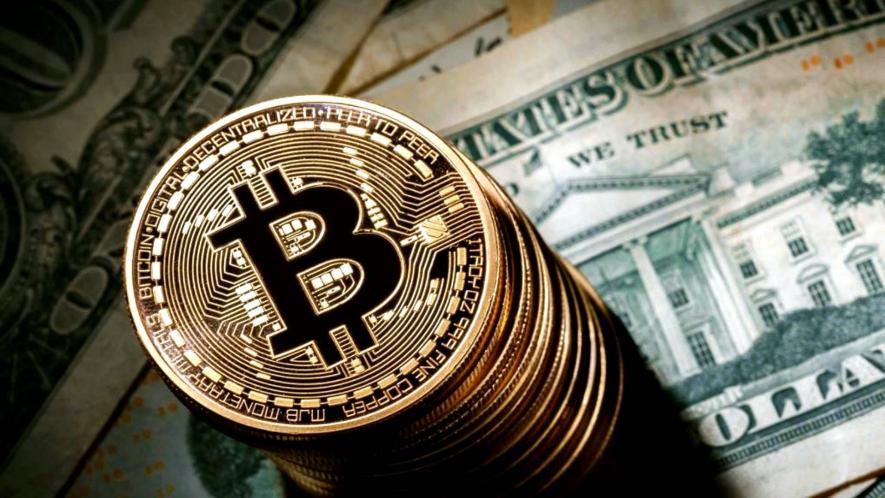With a new myth and news popping up about Bitcoin almost every day, we thought it would be good to examine some of the biggest myths and misconceptions people believe about the world’s first cryptocurrency, see if they have any basis, and right the wrongs.
For example, if you think that the value of Bitcoin “has no basis” or that Bitcoin is too volatile to be used in real life, this guide is for you!
Bitcoin Legends
1. Bitcoin is a Bubble
While it is true that some people buy Bitcoin as a speculative investment for big returns, this does not mean that Bitcoin itself is a bubble. Bubbles are economic cycles characterized by unsustainable rises in market value. These bubbles eventually burst when investors realize that prices are much higher than the underlying value of the asset. Bitcoin is occasionally compared in myth narratives to an infamous old speculative bubble: the “tulip mania” in the 17th century Netherlands. In 1637, speculators caused the prices of some tulip varieties to increase 26 times. The bubble lasted for six months, collapsed, and prices never rose to these levels again.
As a matter of fact, Bitcoin has gone through many price cycles over a period of more than 12 years and has been able to recover to break new records each time. As with all new technologies, ups and downs are to be expected. Amazon stock, for example, slumped from around $100 at the end of the dot.com era in the nineties to $5, but in the decades that followed it became one of the most valuable companies in the world.
Some prominent Bitcoin investors believe that Bitcoin fluctuations exhibit a pattern unique to young markets. According to them, Bitcoin will be stable for a longer period of time, with smaller fluctuations and occasional fluctuations until it achieves relative stability at a certain point in the future. But of course, only time will tell whether this will happen.

2. Bitcoin Has No Real Life Use
Critics of Bitcoin argue that it is not useful in the real world, and that even if it has a use, it is mostly useful for illicit activities. However, both statements are wrong. Bitcoin has a long history as a means of paying anyone in the world without an in-between bank or payment processor. It is also increasingly used by major institutional investors as an inflation-protecting asset like gold.
Contrary to myth, in recent years Bitcoin has become increasingly popular as an inflation-resistant store of value like gold. So much so that BTC became known as “digital gold”. A growing number of major funds and publicly traded companies (Tesla, Square, MicroStrategy) have bought millions or even billions of dollars worth of Bitcoin as a means of better managing their assets.
Just like gold, Bitcoin is a rare asset (There will never be more than 21 million Bitcoins). Of course, gold is heavy and bulky, and difficult to transport and store. Bitcoin, on the other hand, can be sent digitally as easily as sending an e-mail.
In its early years, Bitcoin faced negative attention as a means of payment on the darknet. But just days after the first darknet market closed, Bitcoin prices soared and continued to rise thereafter.
As with other forms of money, some of Bitcoin will be misused. But when compared to the US dollar, the illegitimate use of Bitcoin is bullshit. According to a recent report, 2.1 percent of Bitcoin transaction volume in 2019 was associated with criminal organizations.
Moreover, because all Bitcoin transactions occur on an open blockchain, it is often easier for authorities to monitor illegitimate activity than in the traditional financial system.
3. Bitcoin Has No Real Value
It is true that Bitcoin is not backed by a physical asset like gold. But the same is true for the US dollar and almost any other fiat currency. Bitcoin’s consumable feature is written directly into their code. This feature makes it resistant to inflation. In fiat currencies, when large amounts of money are printed, inflation occurs and reduces the value of the existing supply.
There will be only 21 million BTC in the market. This scarcity is a major force behind Bitcoin’s value.
Besides being limited in supply, the amount of new Bitcoin mined is predictably decreasing over time. Every four years, block rewards paid to miners on the network are halved after a process called “halving.”
This helps ensure that the supply is always running low. This process has allowed the Bitcoin price to show an overall upward trend in the long run, in line with the economy’s fundamental scarcity principle.
Bitcoin’s value also derives from the work that computers on the network contribute through a process called mining. Powerful computers around the world provide massive amounts of processing power to verify and secure each transaction (they are rewarded with new Bitcoin for it).
4. Another Competitor Will Surely Replace Bitcoin
Bitcoin is the first truly successful digital currency. While new cryptocurrencies have long promised to surpass Bitcoin through new features or other benefits, none have come close to that goal.
Although thousands of competing cryptocurrencies have emerged over the past decade, Bitcoin has always been by far the most valuable cryptocurrency in terms of market cap.
It is also the most popular cryptocurrency, accounting for 60 percent of the crypto market alone. The reasons for this are the “first mover” advantage of Bitcoin and the purity of a decentralized, open currency mission. This does not mean that the entry of competitors into the market is not welcome. Bitcoin is operated by a global community of miners and nodes rather than a central authority.
For example, if the underlying architecture of Bitcoin needs to be changed to add new functionality, features, or to guard against a newly discovered bug, the community can initiate a fork to upgrade the network.
For the upgrade to be accepted, a 51 percent majority of the community must support the change. This feature allows Bitcoin to adapt and transform as circumstances require. An example of this is Bitcoin’s Segregated Witness (abbreviated “SegWit”, meaning “Segregated Witness”) upgrade in 2017.
Because the software is open source, developers who can’t reach consensus with the community could even create a hard-fork of the Bitcoin blockchain and create an entirely new cryptocurrency. This is how Bitcoin Cash came into existence, for example. But so far, no Bitcoin copy has come close to replacing the original.
Of course, big innovations are taking place in the crypto world. The emergence of a larger competitor is therefore a plausible possibility. But given the current circumstances, most experts don’t think Bitcoin is likely to be replaced by another cryptocurrency anytime soon.

5. Investing In Bitcoin Is A Gamble
While it is undeniable that Bitcoin has experienced significant price fluctuations over the last decade, this is to be expected for a young and emerging market. Bitcoin has steadily gained long-term value since its first block in 2010. As BTC continues to mature, the robust regulatory framework in countries around the world has helped attract a wave of institutional investment. (such as Tesla, venture funds)
For a Bitcoin myth, there is a fundamental reason for its investor to believe that the value of the asset it holds will increase. In a casino, you know that the dice are rigged in favor of the house. Of course, there is no guarantee of its future performance or that these results will continue, but Bitcoin’s long-term trendline over the past decade has been to the upside.
One of the popular investment strategies used to reduce the impact of volatility is the average dollar cost strategy. In this strategy, you invest a fixed amount every week or every month, regardless of what the market is doing. In an environment dominated by a positive trendline, this strategy usually results in positive returns regardless of the volatility.
Bitcoin volatility seems to be slowing down. A recent Bloomberg analysis compared Bitcoin’s recent bull run to its bullish run in 2017 and found that volatility was significantly lower this time around. You ask why? The rise of institutional participants and the “mainstream” of cryptocurrencies have a stabilizing effect on the trend.
Whether Bitcoin or any other cryptocurrency is in your investment portfolio depends on your personal circumstances, risk tolerance and timing of the investment. While Bitcoin has shown a steady upward trend over the past decade, it has also gone through substantial downward cycles. Investors should be cautious when entering volatile markets (and consider working with a financial advisor before making large investments).
6. Bitcoin Is Not Secure
The Bitcoin network has never been hacked. Its open-source code has been carefully studied by countless security experts and computer scientists. Bitcoin is also the first digital currency to make “untrusted” peer-to-peer currencies a reality, solving the problem of double spending. Moreover, all Bitcoin transactions are irreversible.
Many misconceptions about Bitcoin’s security stem from attacks on third-party businesses and services that use Bitcoin, not the network itself. High-profile hacks of early Bitcoin companies with flawed security procedures (such as the hack targeting early Japan-based exchange Mt. Gox) and occasional data breaches (such as the data breach affecting users of wallet provider Ledger) created question marks about the security of Bitcoin in the minds of users.
BTC’s central protocol has been operating securely with 99.9 percent uptime since its emergence in 2009.
A huge amount of computing power ensures the security of the network. Moreover, the miners powering the network are scattered around the world with nodes located in 100 countries. In other words, there is no single point where the error will occur.
Bitcoin is Harmful to the Environment
Bitcoin mining is an energy-intensive process. But the environmental impact is difficult to determine. First of all, all aspects of the digital economy require energy. The situation becomes understandable when you consider the entire global banking system and visualize the energy required both for processing banking transactions and for office buildings, ATMs, local branches and much more.
A recent study by Ark Investment Management, a New York-based fund, concluded:
“Bitcoin is much more efficient than traditional banking and gold mining on a global scale.”
A significant portion of Bitcoin mining is powered by renewable energy sources (including wind, water and solar). According to the Cambridge Bitcoin Electricity Consumption Index, the actual number ranges from 20 percent to over 70 percent.
Cambridge researchers came to the following conclusion:
“Bitcoin’s environmental footprint remains insignificant at best.”
It is also possible to argue that the economic incentives inherent in Bitcoin mining help support innovations in sustainable energy. Because in a world where renewable energy is rapidly becoming the cheapest option, miners seek to increase their profits by constantly reducing their electricity costs.




